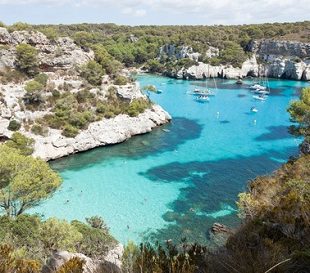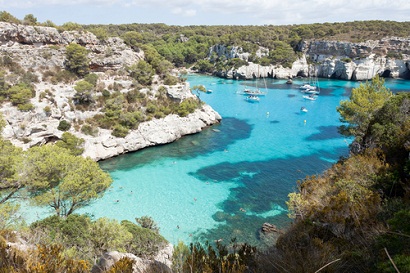
Three cultural activities on Menorca
The island of Menorca – A blissful fusion of art, beauty, heritage and history. For tourists seeking culture, history, art and heritage, the island of Menorca may not immediately spring to mind. Despite Menorca being more synonymous with sangria and banana boats than monuments and museums, this comparatively small Spanish island has a lot to offer for visitors seeking culture, history and art.
Evidence of just how artistic and culturally inspiring Menorca is, was a recently published book, titled “Menorca – Artists of Today”. Featuring 50 artists and being available in Spanish, Catalan and English, this comprehensive book provides insight into the contemporary art scene on Menorca. The first book to be published in more than 30 years that focuses on art on Menorca, “Menorca – Artists of Today” has been affectionately embraced by the Menorcan art fraternity.
With views of sublime natural beauty and remarkable colours and lights set within a peaceful atmosphere, it is easy to understand why Menorca attracts artists from far and near and several world-renowned artists living on the island. With a vibrant art scene and boasting a unique and compelling heritage that has been sculptured by centuries of invasion, art galleries and museums are plentiful on Menorca.
Below are three cultural activities on Menorca that promise to satisfy any yearnings for a day of artistic and historical fulfilment.
Ateneu Cientific Literari I Artistic de Mao – The Scientific, Artistic and Literary Centre
Since it was opened in 1905, the Scientific, Artistic and Literary Centre in the town of Mahon has been staging exhibitions dedicated to showcasing the work of local artists. As well as housing many local exhibitions, this art, science and literary centre is home to paintings by two legendary Menorcan artists – Pasqual Calbo and Caldes.
With such a pulsating local art environment on Menorca, this lively centre has managed to maintain its popularity for more than a century.
Museo Fort Malborough
Deep in the heart of the town of Cala Sant Esteve, the remarkable seven-sided building of Fort Malborough can be found. Built in the late 18th century, Fort Malborough was named after the Duke of Malborough, Sir John Churchill.
Part of the fascination of this outstanding fort stems from the fact that despite a series of invasions on Menorca, the building was never destroyed. Now open as a museum, Museo Fort Malborough provides an intriguing picture of Menorca’s fascinating history.
Museo Municipal de Ciutadella
Built originally as a fortress, the Bastio de Sa Font was renovated in the 1990s and re-emerged as the Museo Municipal de Ciutadella.
From Iron Age skulls to Roman jewellery, the museum is home to many great ancient remnants dug up during one of the island’s many archaeological excavations and tells the history of the island from pre-Talaiotic times to the modern era.



